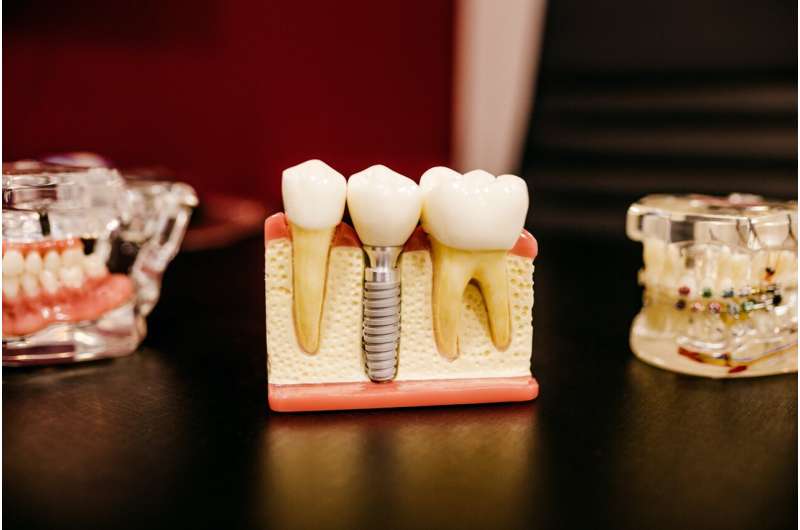This article has been reviewed according to Science X's editorial process and policies. Editors have highlighted the following attributes while ensuring the content's credibility:
fact-checked
peer-reviewed publication
proofread
New guideline details dental pain management strategies for pediatric patients

Acetaminophen or non-steroidal anti-inflammatory drugs (NSAIDs) like ibuprofen are recommended as first-line treatments for managing short-term dental pain in children under age 12, according to a new clinical practice guideline developed by the American Dental Association Science & Research Institute (ADASRI), the University of Pittsburgh School of Dental Medicine and the Center for Integrative Global Oral Health at the University of Pennsylvania School of Dental Medicine. The guideline has been endorsed by the American Dental Association.
A guideline panel determined that, when used as directed, acetaminophen alone, NSAIDs (like ibuprofen) alone or acetaminophen in combination with NSAIDS can effectively manage a child's pain after a tooth extraction or during a toothache when dental care is not immediately available. These and other recommendations are now available in the September issue of The Journal of the American Dental Association.
The guideline evaluated doses of acetaminophen and NSAIDs that may differ from the dosing printed on the over-the-counter packages of these medications. According to the guideline, when acetaminophen or NSAIDs are administered as directed by a dentist or other health care provider, the risk of harm to children from either medication is low.
Guideline senior author Paul Moore, D.M.D., Ph.D., M.P.H., is professor emeritus at the University of Pittsburgh's School of Dental Medicine. He said the recommendations align with previous guidance from the U.S. Food and Drug Administration (FDA), which contraindicated the use of codeine and tramadol in children under age 12 in 2017.
"While prescribing opioids to children has become less frequent overall, this guideline ensures that both dentists and parents have evidence-based recommendations to determine the most appropriate treatment for dental pain," Dr. Moore said. "Parents and caregivers can take comfort that widely available medications that have no abuse potential, such as acetaminophen or ibuprofen, are safe and effective for helping their children find relief from short-term dental pain."
In 2020, the FDA awarded the University of Pittsburgh and ADASRI a three-year $1.5 million grant to develop a clinical practice guideline for the management of acute pain in dentistry in children, adolescents and adults. A group of researchers and methodologists from ADASRI, the University of Pittsburgh School of Dental Medicine, the Center for Integrative Global Oral Health at the University of Pennsylvania School of Dental Medicine, McMaster University and the Art of Democracy worked together to develop the guideline.
"This clinical prescribing guideline is a critical step in supporting appropriate treatment of pediatric acute dental pain through the use of acetaminophen and NSAIDs," said Patrizia Cavazzoni, M.D., director of the FDA Center for Drug Evaluation and Research. "Not only will this advice allow for better treatment of this kind of pain, but it will help prevent unnecessary prescribing of medications with abuse potential, including opioids."
More information: Alonso Carrasco-Labra et al, Evidence-based clinical practice guideline for the pharmacologic management of acute dental pain in children, The Journal of the American Dental Association (2023). DOI: 10.1016/j.adaj.2023.06.014




















